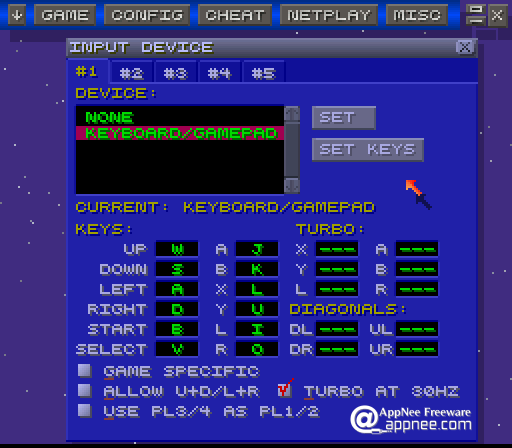

This would show you where the most important RAM variables are at, and the hottest sections of code, for use in optimization. This would essentially turn the usage data into full-on profile data, and you could generate "heat map"-style images. One thing I've been considering was to expand the usage bytes to longs, and then storing the number of reads/writes/executes. > Like I said, I might add the option to clear the usage logging in a later version. It would seem I'm responsible for the ZSNES of assemblers =( That people continue to use xkas v06 to this day (and syntax-compatible clones of it like ASAR) is one of my greater sources of shame. To this day, the program remains a patching assembler, and not a linking assembler.
#Bsnes tutorial how to#
I rewrote bass again after creating a programming language and learning how to implement recursive macros. That added support for optional table assembly. I rewrote bass when I learned what abstraction was. I rewrote xkas again when I learned what classes were, and how to write a recursive parser, to add support for multiple targets (for Mother 3's translation), that went up to v14. I rewrote things to xkas when I learned how to use the spacebar, that went up to v06.
#Bsnes tutorial code#
Its source code would make Cthulu tremble in fear. > And hey what? I didn't know xkas was byuu's work too. Hopefully with this, we can finally abandon the era of closed-source debuggers (Geiger's Snes9X fork, no$sns)

This looks really cool! Thanks a million for putting this together! See the project on GitHub for more info and source.īsnes-plus v05 (Windows, 64-bit accuracy & compatibility) Multiple emulation improvements backported from bsnes/higan (mostly via bsnes-classic) SPC output visualizer (keyboards & peak meters)

SA-1 bus and BW-RAM viewing and (partial) usage logging Real-time code and data highlighting in memory editor, with fast searching for known code/data locations and unexplored regionsĬartridge ROM and RAM views in memory editor for mapper-agnostic analysisĮnhanced VRAM, sprite, and tilemap viewing Improved handling of address mirroring for breakpoints (extends to the entire address space, not just RAM) Redesigned memory editor and breakpoint editor Improved debugger UI with register editing "Step over" and "step out" buttons in debugger Let’s take a look at installing and configuring Xpadder.Bsnes-plus (or bsnes+) is a fork of bsnes (based on bsnes-classic) intended to introduce some new features and improvements, mostly aimed at debugging. There’s a thriving community of gamers making unique profiles for Xpadder for every gaming device under the sun. Not only does Xpadder work wonderfully with the Xbox controller, but it’s customizable to work with any gamepad or input device recognized by Windows. Thanks to the dedication of Jonathan Firth, the one-man coding operation behind popular Xbox configuration tool Xpadder, it’s possible to map the Xbox controller’s inputs to whatever keyboard and mouse inputs the game requires you to use. If you’re in that situation, you’re not out of luck. What if the game doesn’t accept custom inputs or, if it does, they’re limited to actual keystrokes and mouse clicks? If you have success using the wireless models, be sure to drop a note in the comments and share your tips and tricks.Īlso, we strongly recommend reading through the entire tutorial and checking out the specific applications and games you want to use your Xbox controller with before purchasing anything on the What You’ll Need list as some setups require les configuration than others (effectively reducing the cost for the project to $0 outside the cost of the actual controller).Ĭonfiguring Emulators and Games With Limited Customization OptionsĬonfiguring an emulator or game when it readily accepts gamepad buttons presses as legitimate input (as we demonstrated BSNES does in the previous section of the guide) makes it easy to setup the controller as you can customize each button to your heart’s content. While it’s possible to use a wireless controller for this tutorial, doing so adds an extra layer of complexity and troubleshooting to the project (many people report widespread issues with using the wireless 360 controller for PC-based gameplay) and as such we’ve opted to stick with the wired model.

For this tutorial you’ll need the following things:


 0 kommentar(er)
0 kommentar(er)
